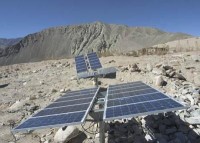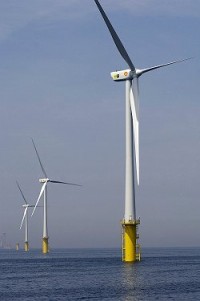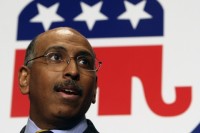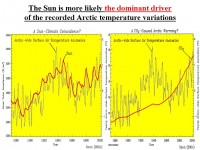
|
Mar 19, 2009
Reality Check: Shell Dumps Wind, Solar and Hydro Power
By Tim Webb, The Guardian. Hat Tip Dr. Benny Peiser CCNET
Shell will no longer invest in renewable technologies such as wind, solar and hydro power because they are not economic, the Anglo-Dutch oil company said today. It plans to invest more in biofuels which environmental groups blame for driving up food prices and deforestation.

Executives at its annual strategy presentation said Shell, already the world’s largest buyer and blender of crop-based biofuels, would also invest an unspecified amount in developing a new generation of biofuels which do not use food-based crops and are less harmful to the environment.
The company said it would concentrate on developing other cleaner ways of using fossil fuels, such as carbon capture and sequestration (CCS) technology. It hoped to use CCS to reduce emissions from Shell’s controversial and energy-intensive oil sands projects in northern Canada.
The company said that many alternative technologies did not offer attractive investment opportunities. Linda Cook, Shell’s executive director of gas and power, said: “If there aren’t investment opportunities which compete with other projects we won’t put money into it. We are businessmen and women. If there were renewables [which made money] we would put money into it.”

Shell said biofuels fitted its core business of providing fuels, logistics, trading and branding. Cook added: “It’s now looking like biofuels is one which is closest to what we do in Shell. Wind and solar are interesting [but] we may continue to struggle with other investment opportunities in the portfolio even with big subsidies in many markets. We do not expect material investment [in wind and solar] going forward.”
Until recently, Shell’s investment in wind power featured prominently in its corporate advertisements. FoE said the company’s move heralded a slightly more honest approach. “Shell is at least being a bit more honest about the fact they are a fossil fuel company. It has seen the limitations of the greenwash it was putting out a few years ago.” Read more here.
Mar 17, 2009
Blame Sunspots for Cool Winter, Spring Weather
By George Taylor, Democrat Herald.com
Brrrr! It’s been a cold week, in a cold month, in a cold winter. And it shows no sign of letting up. Last week the Northwest was gripped by unseasonably cold weather. Areas west of the Cascades saw temperatures dip into the 20s. Locally we dropped as low as 27 on the 13th. Eugene was even colder (24 on the 11th). Two days later, Eugene’s 25 degree-low broke the daily record (26) set in 1944. So far in March our local Hyslop Experiment Station has seen nine days with lows of 32 or below. The month of March averages 5.7 days, so we’re already well ahead of average for an entire March.
As cold as it was here, the Cascades generally protected us from the coldest Arctic air, which remained mostly north and east of us. On the 11th, Spokane, Wash., reported a low of 2 degrees. This was the latest date for a temperature of 2 degrees or less. The previous latest date occurred March 6, 1891. Sandpoint, Idaho, set a similar record the same day with a readi ng of -4 degrees, the latest date for a temperature that low.
Western Montana saw temperatures as low as -14, and subzero readings were reported in other states. In Oregon, many daily records were set, many far below the previous. Meacham was -11 on the 11th; the record for was 7, so this week’s weather broke the record by 18 degrees! LaGrande, Pendleton, Moro, The Dalles, Bend, Redmond, and others also set new records.
The cause of this cold month and cold year? Two things: the tropical Pacific and the sun. The tropical Pacific continues in its “La Nina” mode, in which ocean temperatures off South America are cooler than average. During such conditions, winters in the Northwest are cooler than average, wetter than average, or both. Snowpacks tend to be average or deeper. Thus far, we’ve had a cold but dry winter, with an average mountain snowpack.
The sun continues in its “solar minimum.” There is an 11-year cycle (about) in sunspots. When spots are plentiful, the sun’s energy is stronger, and there is a tendency for Earth’s temperatures to increase. During the low point there are few sunspots, and temperatures are more likely to drop. We have been in a solar minimum for more than a year. NASA and other agencies predicted that sunspot numbers would be increasing by now, but they are not. According to NASA, we are seeing:
- The lowest sustained solar radio flux since the F10.7 proxy was created in 1947;
- Solar wind is the lowest observed since the beginning of the space age;
- The solar wind magnetic field 36 percent weaker than during the minimum of Solar Cycle 23;
- Effectively no sunspots;
- Cosmic rays at near record-high levels.
These might make sense, but here’s what it means: The sun is quiet, and has been for an unusually long period. Looking back over the last several hundred years, we see that solar output has been high for the last 60 years; this coincided with a general increase in temperatures. There have been some periods with low sunspot counts for many years. The early 1700s and 1800s saw lengthy solar minima, accompanied by cold temperatures.
Some solar physicists are suggesting the minimum is a harbinger of lower sunspot numbers for the next several decades. That would mean lower air temperatures, in general - global cooling! Others suggest El Nino and La Nina conditions are driven by variations in the sun; periods with low solar output would bring La Nina conditions (such as now). We’ll see. But with a quiet sun and a continuing La Nina, I don’t expect temperatures to warm up much in the near future. Expect a cool spring, like last year.

George Taylor retired as State Climatologist last year and now operates Applied Climate Services of Corvallis.
Mar 17, 2009
Michael Steele: ‘We Are Not Warming’
By Kate Galbraith, New York Times
Michael Steele, the chairman of the Republican National Committee, said we live on a cooling planet. The Republican National Committee Chairman, Michael Steele, has weighed in on climate change.

In a March 6 radio appearance that is only now percolating through the blogosphere, Mr. Steele apparently fielded a skeptic’s question about global warming. As transcribed by the liberal blog, the Huffington Post, Mr. Steele thanked the questioner and replied this way: We are cooling. We are not warming. The warming you see out there, the supposed warming, and I am using my finger quotation marks here, is part of the cooling process. Greenland, which is now covered in ice, it was once called Greenland for a reason, right? Iceland, which is now green. Oh I love this. Like we know what this planet is all about. How long have we been here? How long? No very long.
Mr. Steele - the originator of the “drill baby drill” slogan that dominated last year’s Republican National Convention - appears to be aligning himself with Republican Senator James Inhofe of Oklahoma, who has denounced the idea of a global warming catastrophe as “the greatest hoax ever perpetrated on the American people,” and said that many of the Obama administration’s early moves amount to “environmental thuggery.” Sen. John Boehner, the Senate minority leader, has described cap-and-trade as a “carbon tax that increases taxes on all Americans who drive a car, who have a job, who turn on a light switch.”
Many other Republicans argue that climate change is real and needs to be addressed. Sen. John McCain, the presidential nominee last year, is one of the original architects of a Congressional cap-and-trade bill, though he forcefully opposes the Obama administration’s plan to auction off emissions allowances to polluters (Mr. McCain would prefer to give the initial allowances away for free). John Huntsman, the Republican governor of Utah, also favors a cap-and-trade system for limiting carbon emissions, as mentioned in this New York Times profile. So does California governor Arnold Schwarzenegger.
In Washington, however, many say it is not Republicans, but the coal-state Democrats in the Senate, who will decide the fate of any cap-and-trade bill. Read more here.
Mar 16, 2009
Update: More Than 700 International Scientists Dissent Over Man-Made Global Warming Claims
By Marc Morano, EPW blog
Outpouring of Skeptical Scientists Continues as 59 Scientists Added to Senate Report. ‘The science has, quite simply, gone awry’
Washington DC: Fifty nine additional scientists from around the world have been added to the U.S. Senate Minority Report of dissenting scientists, pushing the total to over 700 skeptical international scientists - a dramatic increase from the original 650 scientists featured in the initial December 11, 2008 release. The 59 additional scientists added to the 255-page Senate Minority report since the initial release 13 ½ weeks ago represents an average of over four skeptical scientists a week. This updated report - which includes yet another former UN IPCC scientist - represents an additional 300 (and growing) scientists and climate researchers since the initial report’s release in December 2007.
The over 700 dissenting scientists are now more than 13 times the number of UN scientists (52) who authored the media-hyped IPCC 2007 Summary for Policymakers. The 59 additional scientists hail from all over the world, including Japan, Italy, UK, Czech Republic, the U.S. and many are affiliated with prestigious institutions including, NASA, U.S. Navy, U.S. Defense Department, Energy Department, U.S. Air Force, the Philosophical Society of Washington (the oldest scientific society in Washington), Princeton University, Tulane University, American University, Oregon State University, U.S. Naval Academy and EPA.
The explosion of skeptical scientific voices is accelerating unabated in 2009. A March 14, 2009 article in the Australian revealed that Japanese scientists are now at the forefront of rejecting man-made climate fears prompted by the UN IPCC. Prominent Japanese Geologist Dr. Shigenori Maruyama, a professor at the Tokyo Institute of Technology’s Department of Earth and Planetary Sciences who has authored more than 125 scientific publications, said in March 2009 that “there was widespread skepticism among his colleagues about the IPCC’s fourth and latest assessment report that most of the observed global temperature increase since the mid-20th century ‘is very likely due to the observed increase in anthropogenic greenhouse gas concentrations.” Maruyama noted that when this question was raised at a Japan Geoscience Union symposium last year, ‘the result showed 90 per cent of the participants do not believe the IPCC report.” [Also See: The prestigious International Geological Congress, dubbed the geologists’ equivalent of the Olympic Games, was held in Norway in August 2008 and prominently featured the voices of scientists skeptical of man-made global warming fears. [See: Skeptical scientists overwhelm conference: ‘2/3 of presenters and question-askers were hostile to, even dismissive of, the UN IPCC’ & see full reports here & here – More analyses of recent developments see report’s introduction here. ]
“I do not find the supposed scientific consensus among my colleagues,” noted Earth Scientist Dr. Javier Cuadros on March 3, 2009. Cuadros is of the UK Natural History Museum, who specializes in Clay Mineralogy and has published more than 30 scientific papers.
Award-Winning Princeton University Physicist Dr. Robert H. Austin, who has published 170 scientific papers, was elected a member of the U.S. National Academy of Sciences lamented the current fears over global warming. “Unfortunately, Climate Science has become Political Science. It is tragic that some perhaps well-meaning but politically motivated scientists who should know better have whipped up a global frenzy about a phenomena which is statistically questionable at best,” Austin told the minority staff on the Environment and Public Works Committee on March 2, 2009.
See the full report here. See also this Cleveland Weather Examiner coverage here.
See Marc’s powerpoint “Global Warming ‘Consensus’ in Freefall” from the Heartland ICCC here.
Mar 15, 2009
Global Warming Skeptics Under Attack, Labeled as Having Mental Disorder
Posted by Pat
More and more anthropogenic global warming skeptics are coming out of the closet. The field of astrophysics, in particular, is replete with doubters about the importance of CO2 in the current context of global temperature rise. The most obvious reason being that the “model” the weathermen use does not contemplate the recent cooling trend. At all. And this development is worrisome to the Warmists. That is because many Warmists are not scientists, or are well outside of their field, or are relative light weights. For instance Dr Willie Soon, an astrophysicist at Harvard writes:
“The most recent scientific evidence shows that even small changes in solar radiation have a strong effect on Earth’s temperature and climate. In 2005, I demonstrated a surprisingly strong correlation between solar radiation and temperatures in the Arctic over the past 130 years. Since then, I have demonstrated similar correlations in all the regions surrounding the Arctic, including the US mainland and China.”

See larger slide here.
“There is no such match between the steady rise in atmospheric CO2 concentration and the often dramatic ups and downs of surface temperatures in and around the Arctic. I recently discovered direct evidence that changes in solar activity have influenced what has been called the “conveyor-belt” circulation of the great Atlantic Ocean currents over the past 240 years. For instance, solar-driven changes in temperature, and in the volume of freshwater output from the Arctic, cause variations in sea surface temperature in the tropical Atlantic 5-20 years later.
These previously undocumented results have been published in the journal Physical Geography. They make it difficult to maintain that changes in solar activity play an insignificant role in climate change, especially over the Arctic.”
“What WILL they think of next? Conference labels skeptics as having mental disorder”
That is right. If you disagree with the warmists then you are mentally ill. “This weekend, the University of West England is hosting a major conference on climate change denial. Strikingly, it’s being organised by the university’s Centre for Psycho-Social Studies. It will be a gathering of those from the top of society - ‘psychotherapists, social researchers, climate change activists, eco-psychologists’ - who will analyse those at the bottom of society, as if we were so many flitting, irrational amoeba under an eco-microscope. The organisers say the conference will explore how ‘denial’ is a product of both ‘addiction and consumption’ and is the ‘consequence of living in a perverse culture which encourages collusion, complacency and irresponsibility’ (1). It is a testament to the dumbed-down, debate-phobic nature of the modern academy that a conference is being held not to explore ideas - to interrogate, analyse and fight over them - but to tag them as perverse.”
Now, the most striking thing about this is that the diagnosis of mental instability has already been made by these organizers. And none of them are equipped to discuss the issue on its merits. Not only are they well outside of their field of study, but even actual knowledge of the subject matter does not seem to be a criteria for participation. Frankly, that sounds a bit crazy to us here at DBKP. Not only are we skeptics, and have duly reported on solar developments over the existence of global warming on this website, but as libertarians, we are concerned about the call for unlimited government intervention in our lives, as well as the apparent desire of Warmists to shut down all energy sources that aren’t considered green.
“The labelling of those who question certain scientific ideas or green ways of life as ‘deniers’, ‘addicts’ and ‘reptiles’ with a ‘baffling’ inability to understand The Science and act accordingly has a deeply censorious bent. If ‘climate change denial’ is a form of mass denial and self-deception, a fundamentally psychological disorder, then there is no need to engage in a meaningful public debate; instead people just need to be treated. Thus the Ecologist says ‘denial cannot simply be countered with information’; indeed there is apparently ‘plentiful historical evidence that increased information may even intensify denial’”
“Psychologising dissent, and refusing to recognise, much less engage with, the substance of people’s disagreements - their political objections, their rational criticisms, their desire to do things differently - is the hallmark of authoritarian regimes.”
Witch Hunt
Now this should be laughable. AGW is a theory. The impact of solar radiation on climate change is a fact. So who are the nut cases? Is it Dr. Soon’s fault that the theory is falling apart? In the minds of these elitists, the answer is yes. And he should be punished. So who is crazy? Read more here.
Icecap notes: If they want to see mental disorder’s firsthand they should look in the mirror or should have been in Copenhagen at last week’s IPCC meeting warm-up where the alarmist claims got so extreme, they had to be reminded that exaggerations would turn more people away and Andy Revkin called it bordering on ‘climate porn’. The professors can also look in their mirror or read When Prophecies Fail which we wrote about here and here and Chris Horner here.
|
|
|
|







